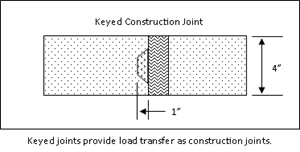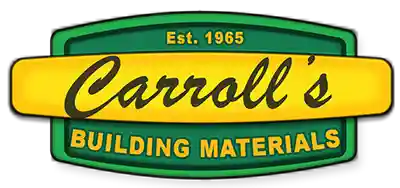How to Do Concrete
Controlling Cracks in Concrete
(Part 2 of 4)
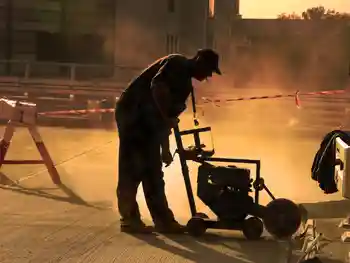
DIY Concrete Guide:
There are two guarantees when it comes to a concrete driveway or slab. It will get hard and it will crack. Concrete shrinks as it dries out and when it cools during temperature changes. When control joints are not provided or cut into the slab, uncontrolled shrinkage cracks occur at fairly predictable intervals. Because these cracks are predictable, they can be controlled with pre-planned joints. Preventing cracks with proper jointing and good construction practices, and adequate reinforcing is far less expensive than making repairs later. There are three different types of joints used in slab on grade construction: Contraction or “Control Joints,” Isolation or “expansion Joints,” and “Construction Joints.”

Control Joints (Contraction Joints)
Control Joints (Contraction Joints) are formed, sawed, or tooled grooves which weaken the concrete so it cracks at the joint. These joints accommodate the movement caused by temperature changes and drying shrinkage.
Joint Spacing is Critical – As shown in the drawing above an un-jointed slab will usually develop a similar pattern of uncontrolled cracking cause by shrinkage. The patterns will change depending on the dimensions of the slab, (including depth), the psi of the concrete, curing, and the temperature extremes the slab is exposed to especially during the first few hours and days after the pour. If joints are spaced to far apart uncontrolled cracks can occur between the Control Joints.
Two rules that will help when pre-planning control joints.
- Rule #1 – Keep joints as square as possible.
- Rule #2 – In order to prevent intermediate cracking, space joints (in feet) no more than 2 – 3 times the slab thickness (in inches). Refer to the table below for the recommended joint spacing. The thicker the slab the farther apart these joints can be place without violating Rule #1.
Example:
A sidewalk that is 4” thick but only 3’ wide using only the chart below you would cut joints 8’ – 12’ apart, however if you did this it would develop uncontrolled cracks approximately every 3’ – 4’. So Rule #1 (Keep Joints as square as possible) first then if it applies rule number 2.
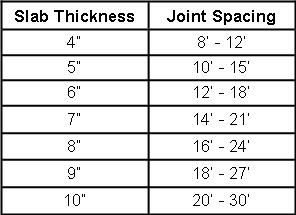
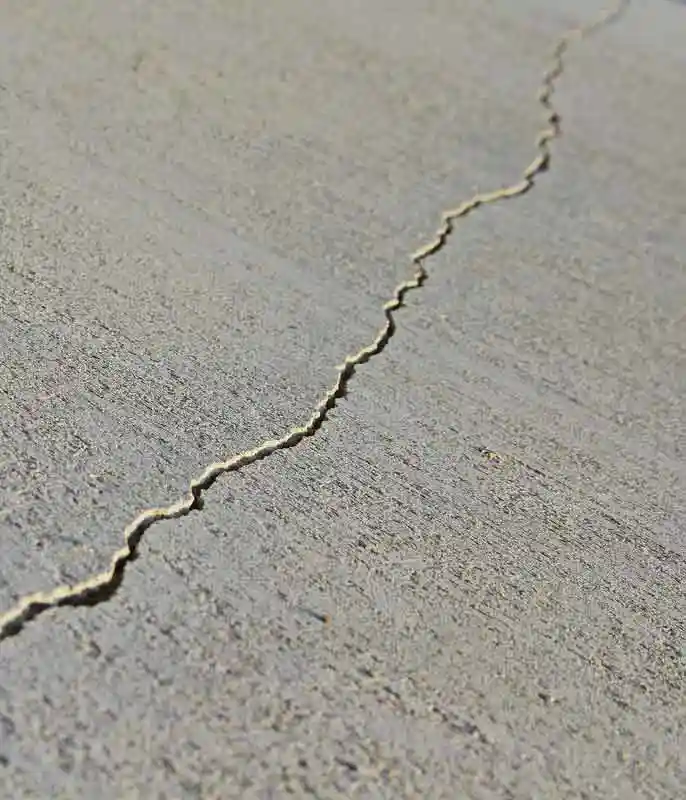
Joint Depth is Critical
It is extremely important for the joints to be cut at least ¼ of the slab depth. This will weaken the slab along this joint line and let the slab crack at this controlled point. If the depth is not deep enough the crack may not follow the desired path along the joint. Refer to the table below for the recommended joint depth.

DIY Concrete Guide: Cut Joints A.S.A.P.
Waiting to long to cut joints is a rookie mistake. Waiting until the next day is normally to long in the Florida Climate. In hot weather, concrete may crack if joints are not cut within 6 – 8 hours after finishing. The rule of thumb is to cut joints as soon as the concrete is hard enough that the edges don’t ravel (dislodging the aggregates) by the saw blade. With conventional wet saws, you can usually start to cut joints 4 – 8 hours after finishing. Using a long-handle lightweight dry-cut saw will allow joints to be cut almost immediately after finishing. This saw is designed to let the operator cut up to 30’ without walking on the slab.
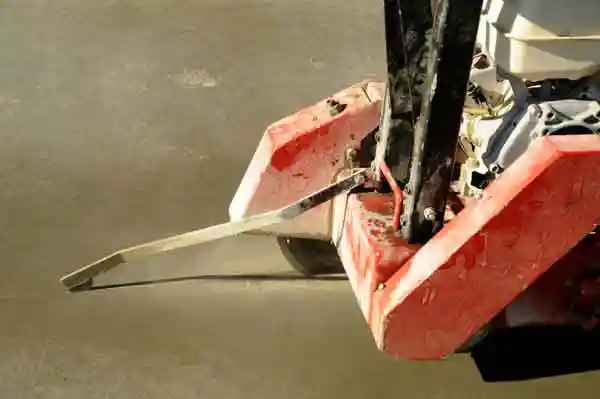
Re-entrant Corners Should be Avoided
Re-entrant corners will usually cause cracking. Proper planning of the joint pattern to eliminate re-entrant corners will correct this problem. Even though you isolate the column box as shown here the slab will still develop uncontrolled cracks. In most cases, as shown here, the simplest way to avoid the re-entrant corner may be to rearrange the joint pattern.
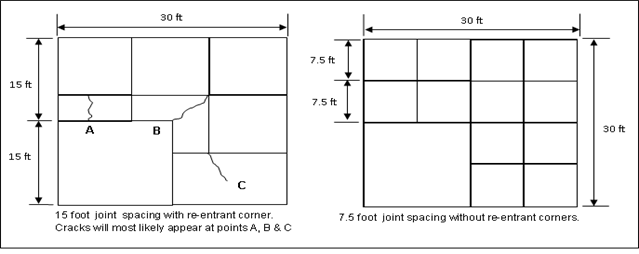
DIY Concrete Guide: Isolation Joints
Install Isolation joint material anywhere concrete will come into contact with existing slabs, steps, or buildings. The Isolation joint should reach the bottom of the slab. This ensures the new slab will be separated from existing structures. If there is no isolation joint as the new slab cures it will shrink slightly. If the existing slab which is not moving is not isolated the new slab will crack as it pulls away from the existing slab. When installing use a chalk line to mark the top of the isolation joint. Secure the isolation joint to the existing slab prior to the pour, or use a chalk line to mark the wall, then as you start the pour, shovel some concrete up against the isolation joint to hold it in place.
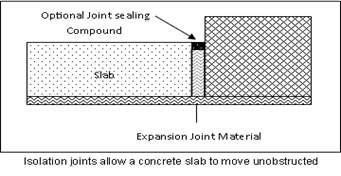
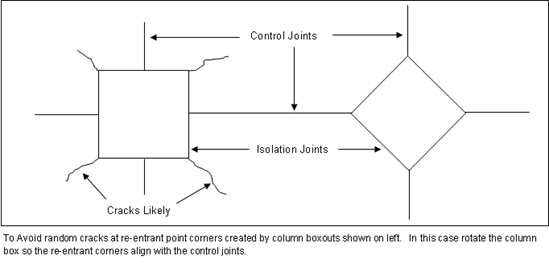
DIY Concrete Guide: Construction Joints
Keyed Construction Joints provides for the transition from one days pour to the next. When concrete placement is stop at the end of the day, a construction joint must be formed. Keyed Construction joints are also used when pouring adjacent paving lanes and load transfer is important, such as with heavy forklifts. If the ends of the slab are not supported by the keyed construction joint, cracking may occur 1’ – 2’ from the joint. It is critical that the key measure ¼ of the slab thickness. A beveled wood strip which attaches to the side of the form can be used for the key (See example Below). Butt joints (Smooth Face) are satisfactory if no load transfer is required.
